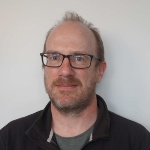The scope of the topics can be adjusted. Feel free to contact us.
New Solvers for the fullwave reflectometry code IPF-FD3D
- For the 2D version
- Hexagonal grid: finite difference time domain (FDTD) scheme exists for vacuum, need to add plasma effects, UPML absorbing boudary conditions
- 4th order methods: central differences in time and space AND coupling to plasma, simultaneous 4th order (simultaneous may not be possible)
Numerical investigation of poloidal correlation reflectometry
- Microwave beam sent to plasma with several receiving antennas
- Each receiving antenna defines different beam geometry, probing a different poloidal position
- Correlation of signals from different positions yields poloidal rotation direction or the pitch angle of magnetic field lines
- Turbulence from codes can be used as input for realistic scenarios
Investigations for quasi-optical mitre bends
- Mitre-bends are the typical waveguide components for highly oversized waveguides because they are more compact than continuous bends
- For moderately oversized waveguides, diffraction effects can partly be compensated with quasi-optical designs
- Quasi-optical mitre-bends can accurately be calculated with PROFUSION.
- The work consists of parameter studies for different ratios of wavelength and waveguide diameter and the investigation of the broadband performance.

Carsten Lechte
Dr. rer. nat.Leader, Microwave Technology

Burkhard Plaum
Dr.-Ing.IT and Research associate, Microwave Technology

